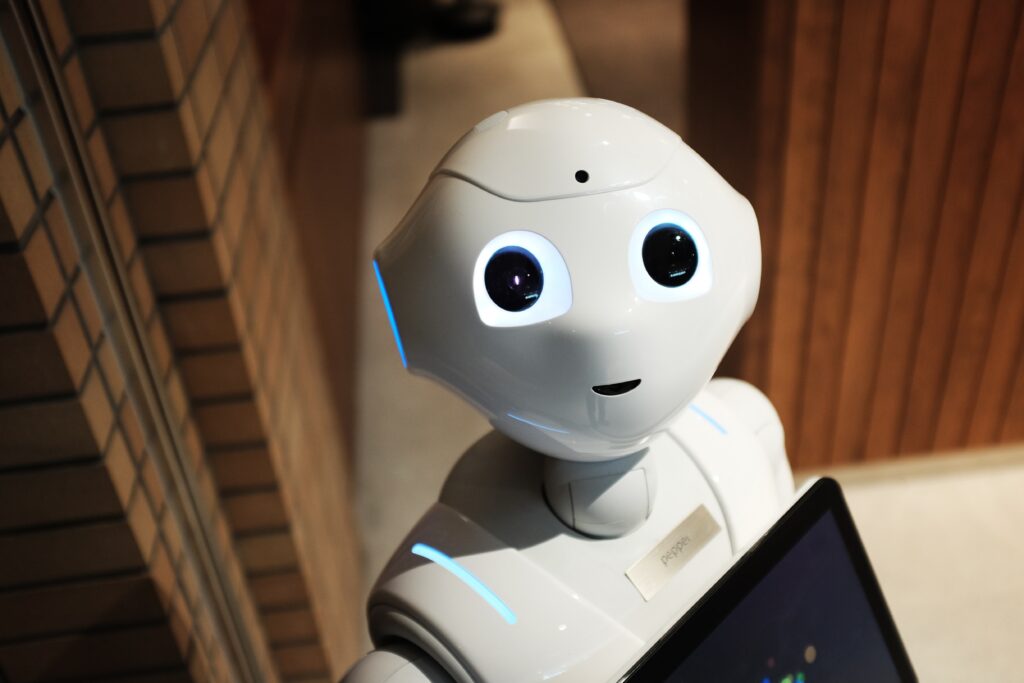So you’ve taken the leap into the world of solar energy and installed a solar inverter, but have you ever wondered what possible downsides this technology may have? In this article, we will explore the disadvantages of solar inverters and shed light on some of the challenges that may arise when harnessing the power of the sun. From efficiency concerns to potential maintenance issues, we will uncover the less glamorous side of solar inverters and help you make a more informed decision about your renewable energy investment.
High Initial Investment
Cost of the Solar Inverter
One of the biggest disadvantages of solar inverters is the high initial investment required. Solar inverters are an essential component of any solar power system, and they can be quite expensive. The cost of a solar inverter can range from several hundred to several thousand dollars, depending on the size and capacity of the system you want to install. This initial investment can be a significant barrier for those who are considering switching to solar power.
Additional Equipment and Installation Charges
In addition to the cost of the solar inverter itself, there are also other equipment and installation charges to consider. Solar power systems require additional components such as solar panels, mounting systems, wiring, and batteries (if you choose to have energy storage). All of these components come at an additional cost and can further add to the overall investment required. Moreover, the installation of a solar power system typically involves hiring professionals, which can also contribute to the total cost.
Maintenance and Replacement Costs
Another factor to consider when it comes to the high initial investment of solar inverters is the ongoing maintenance and replacement costs. Solar inverters, like any other electronic device, may require regular maintenance to ensure optimal performance. This maintenance may involve cleaning the panels, checking for any damage or faults, and replacing any faulty components. Additionally, solar inverters have a limited lifespan, typically ranging from 10 to 20 years, and will eventually need to be replaced. The cost of replacing a solar inverter should be taken into account when considering the long-term investment of switching to solar power.
Dependence on Weather
Performance during Cloudy or Rainy Days
Solar power systems rely on sunlight to generate electricity, which means that their performance can be significantly affected during cloudy or rainy days. When there is less sunlight reaching the solar panels, the amount of electricity produced by the system decreases. This can result in a reduction in the energy output and may require alternative sources of electricity during periods of poor weather conditions.
Effects of Snow or Dust on Solar Panels
Snow or dust accumulation on solar panels can also impact their efficiency. Snow can cover the panels and prevent sunlight from being absorbed, thereby reducing the electricity generation. Additionally, dust or dirt on the panels can create a barrier that blocks sunlight from reaching the solar cells, further reducing their performance. Regular cleaning and maintenance of the solar panels are necessary to ensure optimal energy production.
Limitations during Nighttime
One of the inherent limitations of solar power systems is their inability to produce electricity at night. Since solar panels rely on sunlight, they are not able to generate power after the sun sets. This reliance on daylight restricts the availability of energy during nighttime hours. For those who require a constant and uninterrupted power supply throughout the day and night, additional energy storage systems or connection to the grid may be necessary.

Space Requirement
Size of Solar Panels
Solar power systems require a considerable amount of space for the installation of solar panels. The size and number of solar panels needed will depend on the energy requirements of the household or business. Large-scale installations may require significant land area or rooftop space, which may not be suitable for every location. It is essential to assess the available space and determine if it can accommodate the required number of solar panels.
Finding Suitable and Sun-Exposed Locations
To maximize the efficiency of solar power systems, it is crucial to install solar panels in sun-exposed locations. This can be challenging in areas with limited unobstructed sunlight, such as densely populated urban areas or areas with tall buildings, trees, or other structures that cast shadows. Finding a suitable location with optimal sun exposure may require careful planning and consideration.
Implications on Real Estate Value
While solar power systems can offer numerous benefits, their installation may have implications on the value of the property. Some potential buyers may be hesitant to purchase a property with solar panels due to concerns about maintenance, aesthetics, or potential limitations. Additionally, the installation of solar panels may require modifications to the property’s structure, which can further impact its value. It is essential to weigh the potential effects of solar panel installation on the property’s resale value before making a decision.
Efficiency Loss
Energy Conversion Rates
Solar inverters play a vital role in converting the direct current (DC) generated by solar panels into the alternating current (AC) used in most electrical devices. However, during this conversion process, some energy loss can occur. The efficiency of solar inverters can vary, with higher-quality inverters generally having higher conversion rates. It is crucial to consider the efficiency of the solar inverter when selecting a system to ensure maximum energy production.
Possible Energy Loss due to Lengthy Cables
The distance between the solar panels and the solar inverter can also impact the efficiency of a solar power system. If the cables connecting the panels to the inverter are lengthy, there may be energy loss due to resistance. This loss of energy can reduce the overall output of the system and may require additional measures, such as using thicker cables or optimizing the wiring design, to minimize energy loss.
Performance Deterioration over Time
Over time, the performance of solar inverters can deteriorate, leading to a decrease in energy production. Factors such as exposure to extreme temperatures, environmental conditions, and wear and tear can contribute to this performance deterioration. Regular monitoring and maintenance of the solar inverter can help identify any potential issues and ensure its optimal performance.

Environmental Implications
Environmental Cost of Manufacturing Solar Inverters
While solar power systems are often seen as a more environmentally friendly alternative to traditional energy sources, the manufacturing process of solar inverters does have its own environmental costs. The production of solar inverters involves the extraction and processing of raw materials, energy consumption, and the release of greenhouse gases. It is essential for manufacturers to adopt sustainable practices and minimize the environmental impact of their production processes.
Disposal and Recycling Challenges
Solar inverters, like many electronic devices, have a limited lifespan and will eventually need to be replaced. The disposal of solar inverters can present challenges due to their complex and potentially hazardous components. Proper disposal methods must be followed to minimize the environmental impact and prevent the release of toxic materials into the environment. Additionally, efforts should be made to promote the recycling of solar inverters to recover valuable materials and reduce waste.
Toxic Materials in Solar Inverters
Solar inverters contain various components, including semiconductors and circuit boards, which may contain hazardous materials. These materials can potentially pose risks to the environment and human health if not managed properly. It is important for manufacturers to adhere to strict regulations and guidelines regarding the use and disposal of toxic materials in solar inverters.
Energy Storage Issues
Need for Energy Storage Systems
To overcome the limitations of solar power systems, such as dependence on sunlight and fluctuations in energy production, energy storage systems are often used. These systems store excess energy generated during periods of high production and release it during periods of low production or high demand. However, the need for energy storage systems adds an additional cost to the overall solar power system and may require additional maintenance and management.
Costs Associated with Batteries
Energy storage systems typically utilize batteries to store the excess energy produced by the solar panels. Batteries can be one of the most expensive components of a solar power system, and their cost can vary depending on the type, capacity, and brand. It is important to consider the cost of batteries when determining the overall investment required for a solar power system with energy storage.
Battery Life and Disposal
The lifespan of batteries used in energy storage systems is another important consideration. Batteries degrade over time, leading to a decrease in their capacity and effectiveness. Depending on the type of battery used, the lifespan can range from several years to a decade or longer. Additionally, the disposal of batteries can present environmental challenges due to their potentially hazardous components. Proper recycling and disposal methods must be followed to minimize the impact on the environment.

Noise Pollution
Noise Emitted by Solar Inverters
While solar inverters are generally designed to operate silently, some models may emit low levels of noise during their operation. This noise can be a concern, especially for residential areas where peace and quiet are valued. It is important to consider the noise levels of different solar inverter models when selecting a system, especially if noise pollution is a potential concern.
Potential Annoyance and Health Impacts
The noise emitted by solar inverters may cause annoyance and discomfort for individuals living or working in close proximity to the system. Prolonged exposure to noise pollution can also have adverse health effects, including increased stress levels, sleep disturbances, and impaired concentration. It is important to assess the potential impact of noise pollution on the surrounding environment and consider mitigation measures if necessary.
Limitations in Residential Areas
Solar power systems are often installed in residential areas to harness solar energy for households. However, noise regulations and restrictions may limit the installation and operation of solar inverters in certain residential areas. It is important to consider any local ordinances or community guidelines regarding noise pollution to ensure compliance and avoid potential conflicts.
Grid Connectivity Challenges
Power Quality Issues
Connecting a solar power system to the grid can present challenges related to power quality. In some cases, the electricity generated by solar panels may not meet the same quality standards as the utility grid. This can lead to issues such as voltage fluctuations, frequency variations, and power factor discrepancies. Additional equipment, such as voltage regulators and power conditioning systems, may be required to ensure compatibility and maintain power quality.
Regulatory and Technical Hurdles
Grid connectivity for solar power systems may require compliance with various regulations and technical standards. These regulations and standards can vary depending on the location and utility company. Obtaining the necessary permits, approvals, and certifications can be a time-consuming and complex process. It is crucial to research and understand the regulatory and technical requirements before connecting a solar power system to the grid.
Distribution System Instability
The integration of a large number of solar power systems into the existing distribution system can potentially lead to instability or disruptions. The intermittent nature of solar power generation and the grid’s ability to handle the fluctuations in energy supply can create challenges for grid operators. Advanced monitoring and control systems are required to ensure the stability and reliability of the overall grid network.
Safety Concerns
Risks of Electrical Shocks
Solar power systems involve the installation and operation of electrical components, which can present a risk of electrical shocks if not properly managed. It is important to follow safety guidelines and regulations when installing and maintaining solar inverters to minimize the risk of electrical accidents. Hiring trained and certified professionals for the installation and maintenance of the system is highly recommended.
Potential for Fire Hazards
Although solar power systems are generally considered safe, there is still a potential for fire hazards. Faulty electrical connections, overheating, or improper installation can increase the risk of fire. Regular inspections, maintenance, and adherence to safety standards can help mitigate these risks. It is also important to have appropriate fire safety measures in place, such as fire extinguishers and smoke detectors, to ensure the safety of the property and its occupants.
Safety Regulations and Standards
To ensure the safe installation and operation of solar power systems, various safety regulations and standards have been established. These regulations cover aspects such as wiring, grounding, labeling, and protection against overcurrent and overvoltage. It is important to adhere to these regulations and work with qualified professionals who are familiar with safety practices to minimize any safety concerns.
Inverter Lifespan
Expected Lifespan of Solar Inverters
Solar inverters have a limited lifespan, typically ranging from 10 to 20 years, depending on the quality and usage. After this period, the efficiency and performance of the solar inverter can start to decline. It is important to consider the lifespan of the solar inverter when calculating the long-term costs and benefits of a solar power system.
Need for Replacements and Impacts on Overall Investment
With the limited lifespan of solar inverters, replacements will eventually be necessary. The cost of replacing a solar inverter should be factored into the overall investment of a solar power system. Depending on the age of the system and the availability of compatible inverters, the replacement process may present challenges and incur additional costs.
Reliability Compared to Traditional Energy Sources
Solar power systems with inverters are generally considered reliable and can provide a consistent source of electricity when properly installed and maintained. However, compared to traditional energy sources such as fossil fuels or nuclear power, solar power systems may have limitations in terms of energy output during unfavorable weather conditions or at night. It is important to assess the reliability requirements and consider alternative energy sources if a constant and uninterrupted power supply is essential.
In conclusion, solar inverters, while offering numerous advantages, do come with their own set of disadvantages. The high initial investment, dependence on weather conditions, space requirements, efficiency loss, environmental implications, energy storage challenges, noise pollution, grid connectivity issues, safety concerns, and limited lifespan are all factors that need to be considered when evaluating the suitability of solar power systems. It is important to weigh these disadvantages against the potential benefits and assess the specific needs and constraints of each individual or business before making a decision to invest in solar energy.




